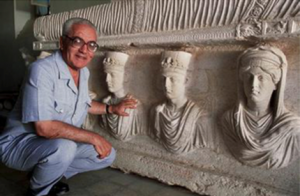U.S. Diplomatic Engagement and Cultural Heritage Protection by Larry Schwartz
Relearning the Art of Nation State Diplomacy by Mike Anderson
U.S. Embassy Tokyo Role in the Establishment of U.S.-Mongolia Relations by Alicia Campi
Global Migrant Remittances – A New Development Finance Paradigm? by Eric V. Guichard
A Media Journey: from Edward R. Murrow to Fake News by Dick Virden
How Summer Adventures Become Diplomacy by Michael McCarry
Post-War Burma, a First-Hand Account from John Cady
Eyewitness: Foreign Service
USIA Films That Failed in Africa by Bob Baker
Abraham Lincoln, Hillary Clinton, and Liu Xiaobo by Bea Camp
From the National Archives
Why Did You Wake Us Up in the Middle of the Night?: Use of NIACT, 1963
Why Did You Wake Us Up in the Middle of the Night?: Use of NIACT, 1978
Foreign Service Accounts from the Oral History Archives (ADST.ORG)
As we watch Brexit developments, ADST’s “Evolution of the European Union: Early Seeds of Dissolution?” [link: https://adst.org/2016/06/evolution-european-union-early-seeds-dissolution/] presents a picture of the EU’s troubled beginnings.
Arthur Hartman, Deputy Chief of Mission to the European Economic Community in the 1960s, discussed the resistance many in the UK felt to joining and noted that many British politicians opposed integration on nationalist grounds and did not like the centralized government in Brussels which even then ruled by edict.
Susan Klingaman, who covered the EEC from the State Department’s Bureau of Intelligence and Research (INR) from 1970-72, predicted that the EC could mean real problems domestically in the individual countries, particularly if they headed toward monetary union: “The big issue at that time was the application of the British to join the EC [European Community] and much of my work focused on that, on whether or not the British would join. And if they did, what would be the implications for Britain and the United States?”
Links
Fast Company | Hi, we failed to sell you America
Science Diplomacy | Science Diplomacy and Future Worlds
The Chicago Council | 2018 CHICAGO COUNCIL SURVEY America Engaged
NSA Archives | The Clinton-Yeltsin Relationship in Their Own Words
NSA Archives | Okinawa: Perennial Flashpoint in the US Japan Alliance
The Global Americans | The evolution of Panama-PRC relations since recognition, and their strategic implications for the U.S. and the region
Wilson Center | ‘The Key Problem of Our Time’: A Conversation with Henry Kissinger on Sino-U.S. Relations
NSA Archives | U.S.-Soviet Cooperative Diplomacy Declassified


